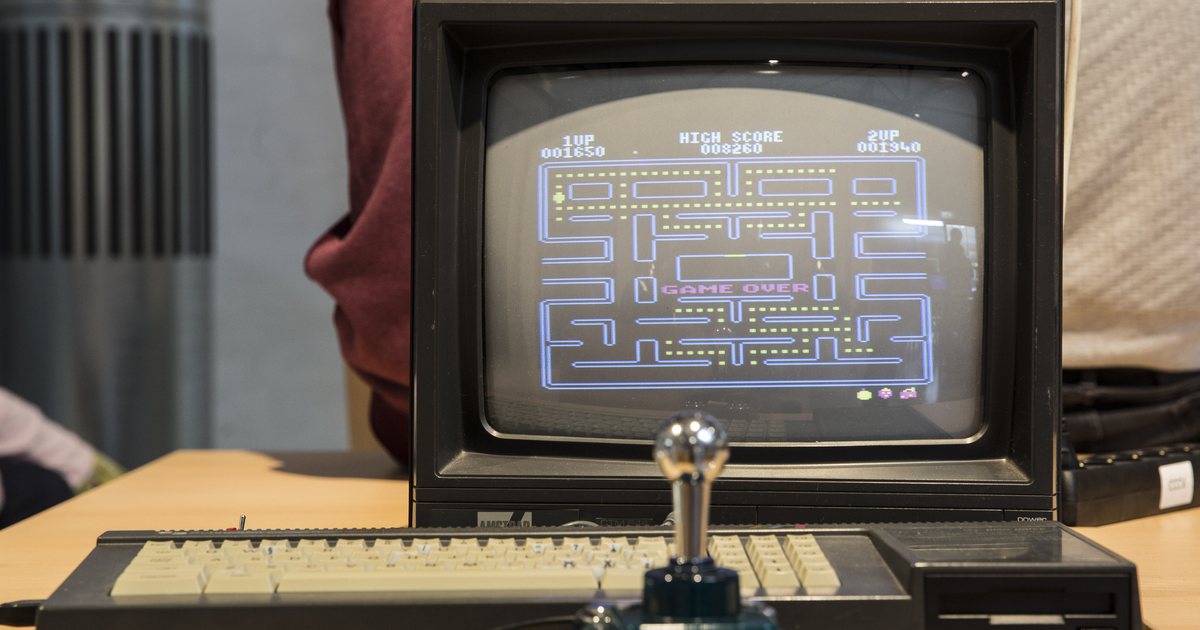
We all have to look a little harder for reasons to celebrate in this dark year of 2020, but here’s a good one: On May 22, Pac-Man turns 40.
The first video game to really catch the attention of a global audience came to Japanese and American arcades in 1980. The round, yellow hero’s pellet-chomping, ghost-dodging ways immediately felt like a technological marvel. But now, the same feat of computer programming that seemed so complex way back when has been rebuilt from the ground up – by a thinking computer.
That creation, the AI that built its own Pac-Man, is the product of Nvidia’s research team. The Nvidia GameGAN, as it’s called, learned everything it could about the classic arcade game over the course of 50,000 “episodes,” or play sessions, in which it monitored key presses and on-screen behaviors to glean an understanding of Pac-Man‘s ground rules.
Armed with that knowledge, the AI then set to work on building a Pac-Man of its own. This isn’t so much a remake as it is a completely new creation, crafted by a neural network that was trained over a period of four days to understand the fundamentals of how the original game works.
[embedded content]
(The in-game footage you see above appears a little choppy, but Nvidia tells us GameGAN’s Pac-Man runs smoothly.)
The particulars of how this all came together gets a little technical, so bear with me. The “GAN” in GameGAN is an acronym for “generative adversarial network.” In short, a GAN is actually two neural networks working at cross-purposes (hence, the “adversarial”) toward the shared goal of learning enough about a thing to create a convincingly real version of it. Not a carbon copy, mind you, but something that could pass itself off as a real, if different, thing.
You’re probably familiar with GAN creations even if you don’t realize it. You’ve surely read about or seen deepfakes, those partially or wholly faked videos that can change the faces and/or voices of speakers in modified videos. Well, GANs are the underlying AI technology that allow for the creation of deepfakes.
Instead of sticking Donald Trump’s face on a toddler’s body or inserting Tom Holland into Back to the Future, Nvidia’s GameGAN played and learned Pac-Man. It then used the information that was gleaned to build something wholly new.
“It learned the rules of Pac-Man. This artificial intelligence learned that Pac-Man can move around this maze. … It learned that the ghosts move in a particular way, and that when Pac-Man eats one of the power pellets the ghosts turn blue. And it learned what happens when a ghost touches Pac-Man,” Nvidia’s Rev Lebaredian, vice president of simulation technology, told Mashable.
“It learned all of this without having any concept of how the game mechanics work in the code. It observed it just like a human might.”
GameGAN then used the knowledge it amassed to make a new Pac-Man. Having developed an understanding of both the mechanics and design, the AI is able to generate wholly new maze layouts. I haven’t seen the finished product outside of the above trailer, but I’ll be trying it alongside everyone else when Nvidia releases GameGAN’s Pac-Man later in 2020, potentially over the summer.
Of course, Pac-Man is just an experiment, proof that this technology works well enough to create a convincing offshoot of the thing it was trained to understand. Broader applications of the technology could see it being used to make game developers’ lives easier when it comes to building a world or procedural generation. It could also potentially have real world applications, helping autonomous robots understand how to work in a warehouse or on an assembly line.
For now it’s more of a technological marvel. An alternative, less terrifying use of deepfake’s building blocks put to work on something uniquely exciting. You can read more about the work that went into creating Nvidia’s GameGAN right here.
